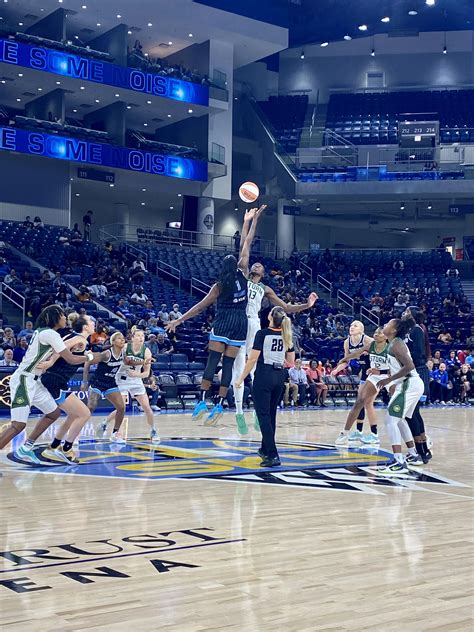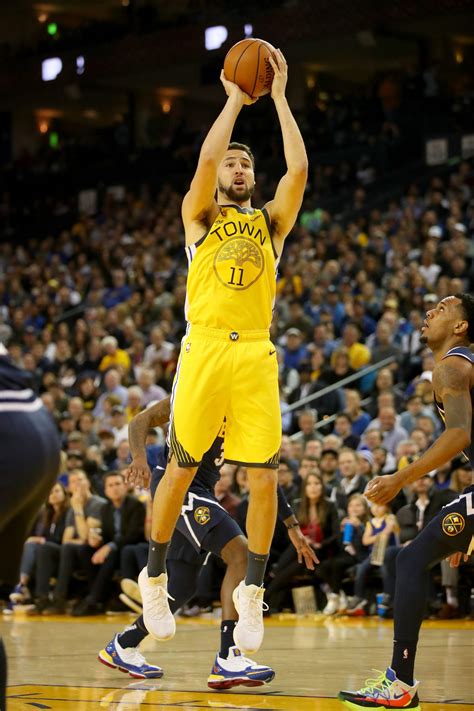
After more than two decades on the air, “Around the Horn” was canceled by ESPN due to a confluence of factors, including declining viewership, budget cuts, and a strategic shift toward younger audiences and digital platforms, according to the show’s former host, Tony Reali.
Tony Reali, the longtime host of ESPN’s “Around the Horn,” has shed light on the reasons behind the show’s cancellation, citing a combination of declining ratings, budgetary constraints within the network, and ESPN’s evolving strategy to engage younger demographics through digital media. In a candid discussion, Reali detailed the internal dynamics and external pressures that ultimately led to the end of the show’s 22-year run. “It was a perfect storm of things,” Reali explained. “The ratings were down, budgets were being cut, and ESPN was looking to go younger and more digital.”
Reali elaborated on the impact of shifting viewership habits, particularly the move away from traditional television consumption. “People are consuming sports content in different ways now,” he noted. “They’re watching highlights on their phones, following games on social media, and engaging with short-form video content. The days of sitting down for a half-hour to watch a panel discussion are dwindling.”
The financial pressures on ESPN, driven by cord-cutting and declining cable subscriptions, also played a significant role. “ESPN is facing economic realities that are affecting all media companies,” Reali stated. “They have to make tough decisions about where to allocate resources, and unfortunately, ‘Around the Horn’ was a casualty of those decisions.”
Reali emphasized that the cancellation was not a reflection of the show’s quality or the talent of its contributors. “We had an amazing run, and I’m incredibly proud of what we accomplished,” he said. “The show gave a platform to so many talented writers and personalities, and it fostered a community of passionate sports fans. It’s just that the media landscape has changed, and the show no longer fit into ESPN’s long-term plans.”
The decision to end “Around the Horn” aligns with ESPN’s broader strategy to invest in digital platforms and appeal to a younger audience. The network has been aggressively expanding its presence on social media, launching new streaming services, and developing original content for platforms like YouTube and TikTok. This shift reflects a recognition that the future of sports media lies in reaching viewers where they are: online and on their mobile devices.
Reali acknowledged the emotional impact of the show’s cancellation on both the cast and the audience. “It’s tough to say goodbye to something that’s been a part of your life for so long,” he admitted. “But I’m grateful for the opportunity I had, and I’m excited to see what the future holds.”
The cancellation of “Around the Horn” marks the end of an era for ESPN, but it also underscores the challenges and opportunities facing the sports media industry as it navigates a rapidly changing landscape. While the show may be gone, its legacy will endure in the memories of its fans and the careers of the many talented individuals who contributed to its success.
The legacy of “Around the Horn” extends beyond its entertainment value. The show was known for its witty banter, insightful commentary, and the unique scoring system that rewarded both accuracy and creativity. It provided a platform for diverse voices and perspectives, and it helped to elevate the profile of many sports writers and analysts. The show also played a role in shaping the way sports are discussed and debated on television. Its fast-paced format and emphasis on quick-wittedness influenced other sports talk shows and helped to create a more engaging and interactive viewing experience.
ESPN’s decision to cancel “Around the Horn” also reflects a broader trend in the media industry, where traditional television is losing ground to streaming services and digital platforms. As viewers increasingly cut the cord and consume content online, media companies are forced to adapt their strategies to remain competitive. This often means investing in digital content, targeting younger audiences, and exploring new revenue streams. The cancellation of “Around the Horn” is a reminder that even long-running and successful television shows are not immune to these pressures.
The future of sports media is likely to be increasingly digital and personalized. Viewers will have more choices about what they watch, when they watch it, and how they watch it. They will also expect more interactive and engaging experiences. Media companies that can successfully navigate this changing landscape will be well-positioned to thrive in the years ahead. ESPN, with its vast resources and established brand, is well-positioned to remain a dominant player in the sports media industry, but it will need to continue to adapt and innovate to meet the evolving needs of its audience.
“Around the Horn” premiered on ESPN in 2002 and quickly gained a loyal following. The show featured a panel of sports writers and analysts who debated the day’s top sports topics. The host, initially Max Kellerman and later Tony Reali, would award points to the panelists based on the quality of their arguments and their ability to generate entertaining and informative commentary. The panelist with the most points at the end of the show would be declared the winner.
Over the years, “Around the Horn” became known for its fast-paced format, its witty banter, and its diverse cast of characters. The show featured a rotating cast of panelists, including some of the most respected and well-known names in sports media. These personalities, along with Reali’s skillful moderation, contributed to the show’s unique appeal.
The show’s success was also due in part to its innovative scoring system. The points system encouraged panelists to be both informative and entertaining, and it created a sense of competition that kept viewers engaged. The show also embraced technology, using graphics and sound effects to enhance the viewing experience.
The cancellation of “Around the Horn” has been met with disappointment by many fans, who have taken to social media to express their sadness and gratitude. Many have praised the show for its intelligent and entertaining commentary, its diverse cast of characters, and its unique format. Some have also expressed concern that the cancellation is a sign of a broader decline in quality sports programming on television.
Reali himself has expressed gratitude for the opportunity to host “Around the Horn” for so many years. In a statement, he thanked the show’s viewers, its cast, and its crew for their support. He also acknowledged the challenges facing the sports media industry, and he expressed optimism about the future of sports journalism.
The cancellation of “Around the Horn” is a significant event in the history of ESPN, but it is also a sign of the times. The sports media industry is undergoing a period of rapid change, and media companies are being forced to adapt to new technologies, new platforms, and new consumer behaviors. While “Around the Horn” may be gone, its legacy will live on in the memories of its fans and the careers of the many talented individuals who contributed to its success.
The decision to cancel “Around the Horn” was undoubtedly a complex one, involving a variety of factors. However, the three main drivers appear to be declining viewership, budgetary constraints, and a strategic shift towards digital media and younger audiences. These factors are not unique to ESPN; they are affecting media companies across the board.
The decline in viewership for traditional television programming is a well-documented trend. As more and more people cut the cord and consume content online, television networks are losing viewers and advertising revenue. This trend has been particularly pronounced among younger audiences, who are more likely to consume content on streaming services and social media platforms.
ESPN has been trying to address this trend by investing in digital content and targeting younger audiences. The network has launched new streaming services, such as ESPN+, and it has been creating original content for platforms like YouTube and TikTok. The cancellation of “Around the Horn” is part of this broader strategy.
Budgetary constraints are also playing a role. ESPN has been facing increasing pressure to cut costs in recent years, due to declining revenue and rising programming costs. The cancellation of “Around the Horn” is one of the ways that the network is trying to reduce its expenses.
The strategic shift towards digital media and younger audiences is perhaps the most important factor in the cancellation of “Around the Horn.” ESPN believes that the future of sports media lies in reaching viewers online and on their mobile devices. The network is investing heavily in digital content and targeting younger audiences in an effort to remain competitive.
The cancellation of “Around the Horn” is a difficult decision, but it is one that ESPN believes is necessary to ensure its long-term success. The network is committed to providing high-quality sports programming to its viewers, and it believes that it can do so more effectively by focusing on digital media and younger audiences.
The impact of “Around the Horn”‘s cancellation will be felt in different ways. For fans of the show, it means the loss of a familiar and beloved program. For the show’s cast and crew, it means the loss of their jobs. For ESPN, it means a change in its programming lineup and a shift in its strategic focus.
The long-term consequences of the cancellation are difficult to predict. However, it is likely that the decision will accelerate the trend towards digital media and younger audiences in the sports media industry. It is also likely that other television networks will follow ESPN’s lead and cut back on traditional programming in favor of digital content.
The cancellation of “Around the Horn” is a reminder that the sports media industry is constantly evolving. Media companies must be willing to adapt to new technologies, new platforms, and new consumer behaviors in order to remain competitive. The future of sports media is uncertain, but it is clear that digital media and younger audiences will play an increasingly important role.
Tony Reali’s perspective on the cancellation provides valuable insight into the internal dynamics and strategic considerations that led to the decision. His candor and honesty offer a glimpse behind the scenes at ESPN, and they help to explain why the network made the difficult choice to end “Around the Horn.”
Reali’s comments also underscore the challenges facing the sports media industry as a whole. The decline in viewership for traditional television programming, the rise of digital media, and the increasing pressure to cut costs are all factors that are affecting media companies across the board.
The cancellation of “Around the Horn” is a reminder that even long-running and successful television shows are not immune to these pressures. Media companies must be willing to adapt and innovate in order to survive in the rapidly changing media landscape.
The future of sports media is uncertain, but it is clear that digital media and younger audiences will play an increasingly important role. Media companies that can successfully navigate this changing landscape will be well-positioned to thrive in the years ahead.
The cancellation of “Around the Horn” marks the end of an era for ESPN, but it also signals the beginning of a new chapter in the history of sports media. The industry is evolving, and ESPN is evolving with it. The network is committed to providing high-quality sports programming to its viewers, and it believes that it can do so more effectively by focusing on digital media and younger audiences.
While the cancellation of “Around the Horn” may be disappointing for some, it is ultimately a necessary step in ESPN’s evolution. The network must adapt to the changing media landscape in order to remain competitive and continue to serve its viewers.
The legacy of “Around the Horn” will live on in the memories of its fans and the careers of the many talented individuals who contributed to its success. The show was a pioneer in the sports media industry, and it helped to shape the way sports are discussed and debated on television. Its fast-paced format, its witty banter, and its diverse cast of characters made it a unique and beloved program.
While “Around the Horn” may be gone, its influence will continue to be felt in the sports media industry for years to come. The show paved the way for other sports talk shows, and it helped to create a more engaging and interactive viewing experience. Its legacy will endure in the memories of its fans and the careers of the many talented individuals who contributed to its success.
The cancellation of “Around the Horn” is a reminder that the sports media industry is constantly evolving. Media companies must be willing to adapt to new technologies, new platforms, and new consumer behaviors in order to remain competitive. The future of sports media is uncertain, but it is clear that digital media and younger audiences will play an increasingly important role. ESPN is committed to adapting to these changes and continuing to provide high-quality sports programming to its viewers.
The cancellation of “Around the Horn,” while disappointing for many, underscores the dynamic shifts within the sports broadcasting landscape. Declining linear viewership, coupled with budgetary realignments and ESPN’s strategic pivot toward digital platforms and younger demographics, created a challenging environment for the show’s continued existence. Tony Reali’s insights provide a valuable perspective on the factors contributing to this decision. As ESPN navigates this evolving landscape, it remains focused on delivering compelling sports content to its audience through a variety of channels, adapting to the changing consumption habits of viewers.
Frequently Asked Questions (FAQ)
1. Why was “Around the Horn” canceled after being on the air for over two decades?
According to Tony Reali, the show’s longtime host, the cancellation stemmed from a combination of factors. “The ratings were down, budgets were being cut, and ESPN was looking to go younger and more digital.” He further explained that viewership habits have shifted, with more people consuming sports content through digital platforms and short-form video, reducing the audience for traditional half-hour panel discussions. Budgetary constraints within ESPN, driven by cord-cutting and declining cable subscriptions, also contributed to the decision.
2. How did the decline in traditional TV viewership affect “Around the Horn”?
Reali emphasized that the way people consume sports content has drastically changed. “People are consuming sports content in different ways now,” he said. “They’re watching highlights on their phones, following games on social media, and engaging with short-form video content.” This shift away from traditional television viewing meant fewer people were tuning in to “Around the Horn,” impacting its ratings and ultimately its viability within ESPN’s programming lineup.
3. What impact did ESPN’s budget cuts have on the decision to cancel the show?
ESPN, like many media companies, is facing economic challenges due to cord-cutting and changing consumer behavior. “ESPN is facing economic realities that are affecting all media companies,” Reali stated. “They have to make tough decisions about where to allocate resources, and unfortunately, ‘Around the Horn’ was a casualty of those decisions.” The need to reduce expenses and reallocate resources towards more strategic areas, such as digital content, played a significant role in the decision to cancel the show.
4. How does the cancellation of “Around the Horn” fit into ESPN’s broader strategy for the future?
The decision to end “Around the Horn” aligns with ESPN’s broader strategy to invest in digital platforms and appeal to a younger audience. The network has been expanding its presence on social media, launching new streaming services, and developing original content for platforms like YouTube and TikTok. This shift reflects a recognition that the future of sports media lies in reaching viewers where they are: online and on their mobile devices. Cancelling “Around the Horn,” allows for reallocation of resources to these new, digital-focused ventures.
5. What was Tony Reali’s reaction to the cancellation of “Around the Horn,” and what does he think the future holds for sports media?
Reali expressed gratitude for the opportunity to host the show for so many years and acknowledged the emotional impact of the cancellation on both the cast and the audience. “It’s tough to say goodbye to something that’s been a part of your life for so long,” he admitted. He also recognized the challenges facing the sports media industry and expressed optimism about the future of sports journalism, suggesting that adaptation and innovation are key to navigating the evolving landscape. He acknowledged that the future of sports media is likely to be increasingly digital and personalized.









